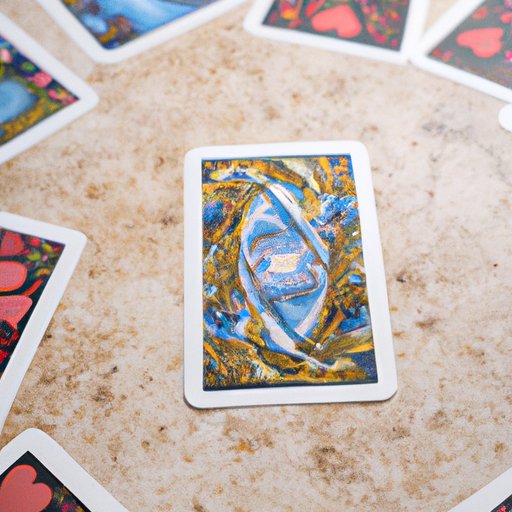
Introduction to Tarot Cards
Tarot cards have been a popular tool for divination and self-reflection for centuries. The first known tarot deck dates back to the 15th century, and since then, various decks have been created and used for readings. Tarot cards can be used for gaining insight into various aspects of life, such as relationships, career, and personal growth.
When using tarot cards, it’s important to keep an open mind and approach them with a sense of curiosity. Tarot readings are not meant to predict the future with absolute certainty, but rather to offer guidance and insight into the present moment.
Understanding Tarot Card Meanings
Before diving into a tarot reading, it’s helpful to have a basic understanding of each card in the deck. A standard tarot deck consists of 78 cards, divided into two categories: the Major Arcana and the Minor Arcana.
The Major Arcana consists of 22 cards, each with a specific name and meaning. These cards represent major life events and themes, such as The Fool (new beginnings) and The World (completion).
The Minor Arcana consists of 56 cards, divided into four suits: Cups (emotions), Swords (intellect), Wands (creativity), and Pentacles (material possessions). Each suit contains 14 cards, including 10 numbered cards and four court cards. These cards represent more specific aspects of life.
Interpreting the cards during a reading involves considering the significance of each card and how it relates to the question being asked. This process can involve intuition and personal associations, as well as an understanding of traditional meanings.
Building Your Tarot Vocabulary
As with any new skill or interest, there is often a specific terminology and language used in the field. The same goes for Tarot. It can be helpful to familiarize oneself with the various terms and phrases used when reading Tarot cards.
Some important terms to know when learning to use tarot cards include:
- Arcana: A term used to describe the two categories of cards in a tarot deck (Major and Minor).
- Reversed: When a card appears upside down during a reading, indicating the opposite of its upright meaning.
- Spread: The arrangement of cards during a reading, which can vary depending on the question being asked and the reader’s preference.
Understanding tarot terminology can help one feel more confident and knowledgeable when using tarot cards.
Preparing for Your First Tarot Reading
Before beginning a tarot reading, it’s important to set intentions for what you hope to gain from the experience. This can involve focusing on a specific question or area of life, and being open to whatever insights may arise.
Choosing the right tarot deck can also be helpful in developing a connection with the cards. There are various decks available, each with its own unique artwork and symbolism. It’s important to find a deck that resonates with you and your reading style.
Clearing the tarot deck before a reading involves shuffling the cards and possibly using other methods to reset the energy. This can include using crystals or visualization techniques.
Preparing a sacred space for the reading involves creating a calming and meditative environment where the focus can be on the cards and the energy of the reading.
Basic Tarot Card Spreads
There are various tarot card spreads that can be used during a reading, depending on the question being asked and the reader’s preference. Some basic tarot card spreads include:
- The 3-Card Spread: Involves drawing three cards to represent the past, present, and future or to offer insight into a situation.
- The Celtic Cross: A more complex spread involving 10 cards, which can offer more detailed insights into a question or situation.
- The Horseshoe Spread: Involves arranging seven cards in the shape of a horseshoe, offering a deeper understanding of a particular situation or decision.
Understanding and practicing these basic tarot card spreads can help develop confidence and intuition when reading tarot cards.
Using Intuition in Tarot Readings
While understanding the meanings and spreads of tarot cards is important, it’s also crucial to trust one’s intuition during a reading. This involves reading the energy of the cards and paying attention to any personal associations or insights that arise.
Tips and tricks for trusting one’s intuition while using tarot cards include:
- Approaching the reading with an open mind and sense of curiosity.
- Noticing any physical or emotional sensations that arise when looking at certain cards.
- Listening to one’s inner voice and interpreting the cards in a way that feels most authentic.
Making Tarot Readings a Daily Practice
Incorporating tarot readings into one’s daily routine can be a powerful tool for personal growth and self-reflection. This can involve setting aside time each day for a brief reading and journaling about any insights or emotions that arise.
Using tarot cards for personal growth and self-reflection involves allowing the cards to offer guidance and insight into one’s thoughts, emotions, and actions. This can help develop a deeper understanding of oneself and one’s relationships with others.
Conclusion
Using tarot cards can be a powerful tool for personal growth and insight. By understanding the meanings and spreads of the cards, trusting one’s intuition, and incorporating tarot readings into one’s daily routine, one can develop a deeper understanding of oneself and the world around them.
Whether you are a beginner or an experienced reader, approaching tarot cards with a sense of curiosity and openness can unlock endless possibilities for growth and self-discovery.





